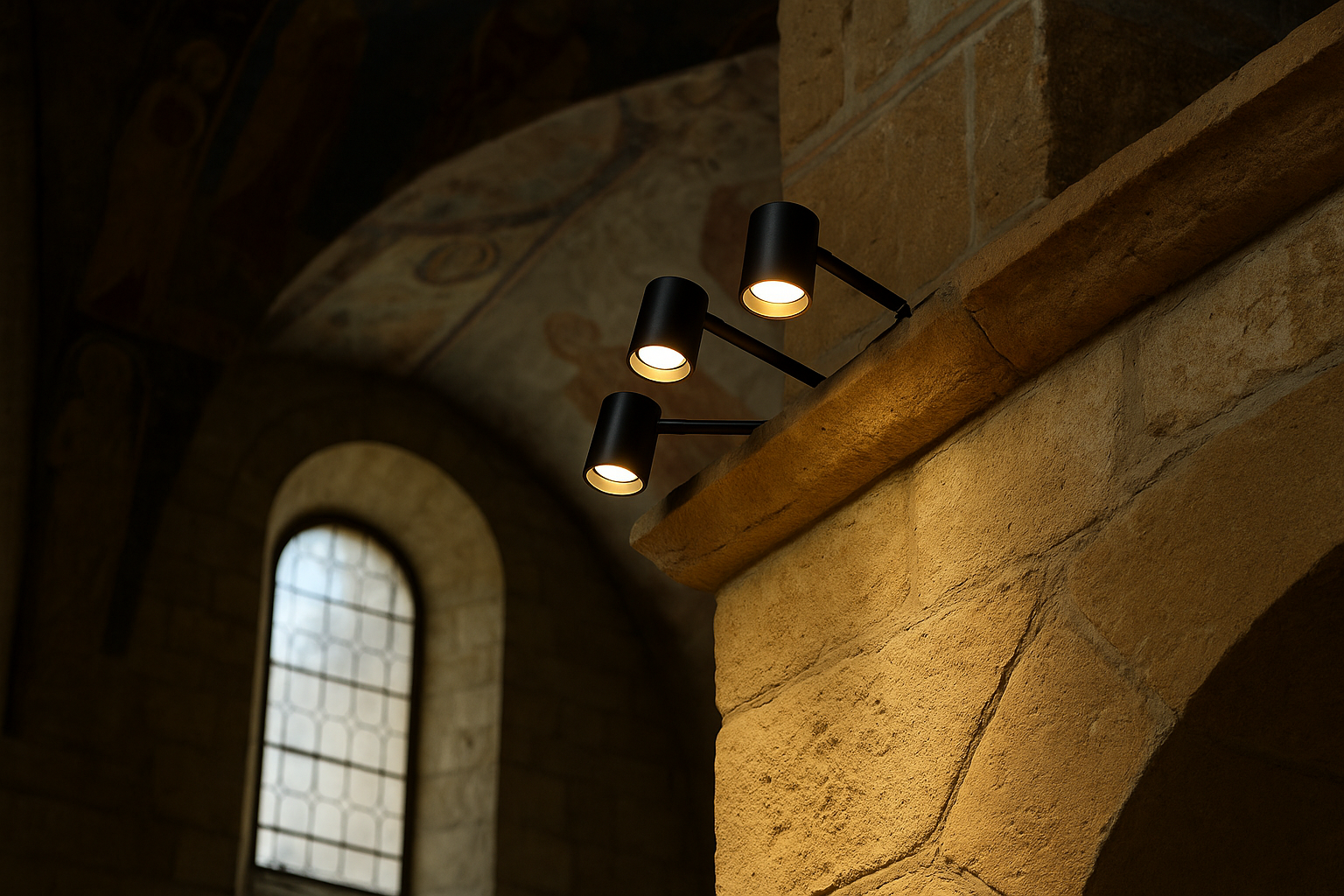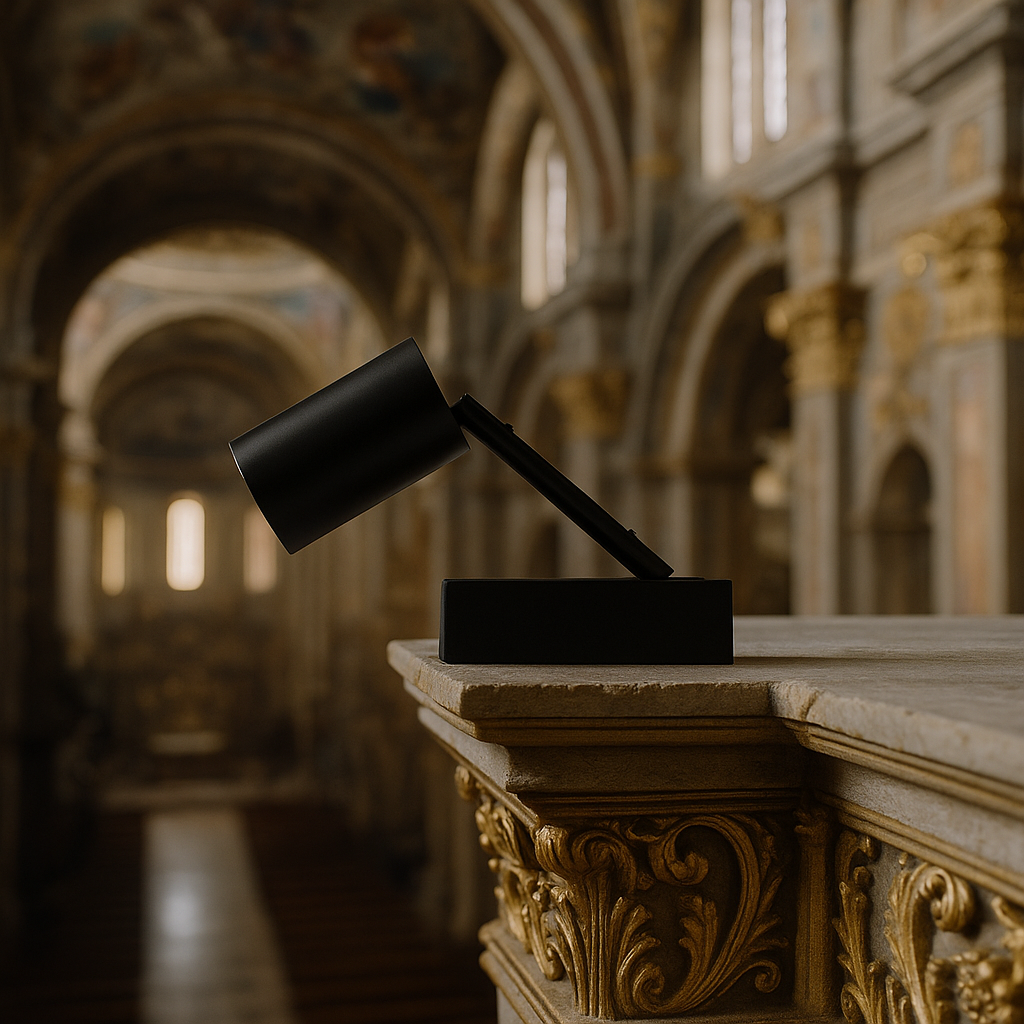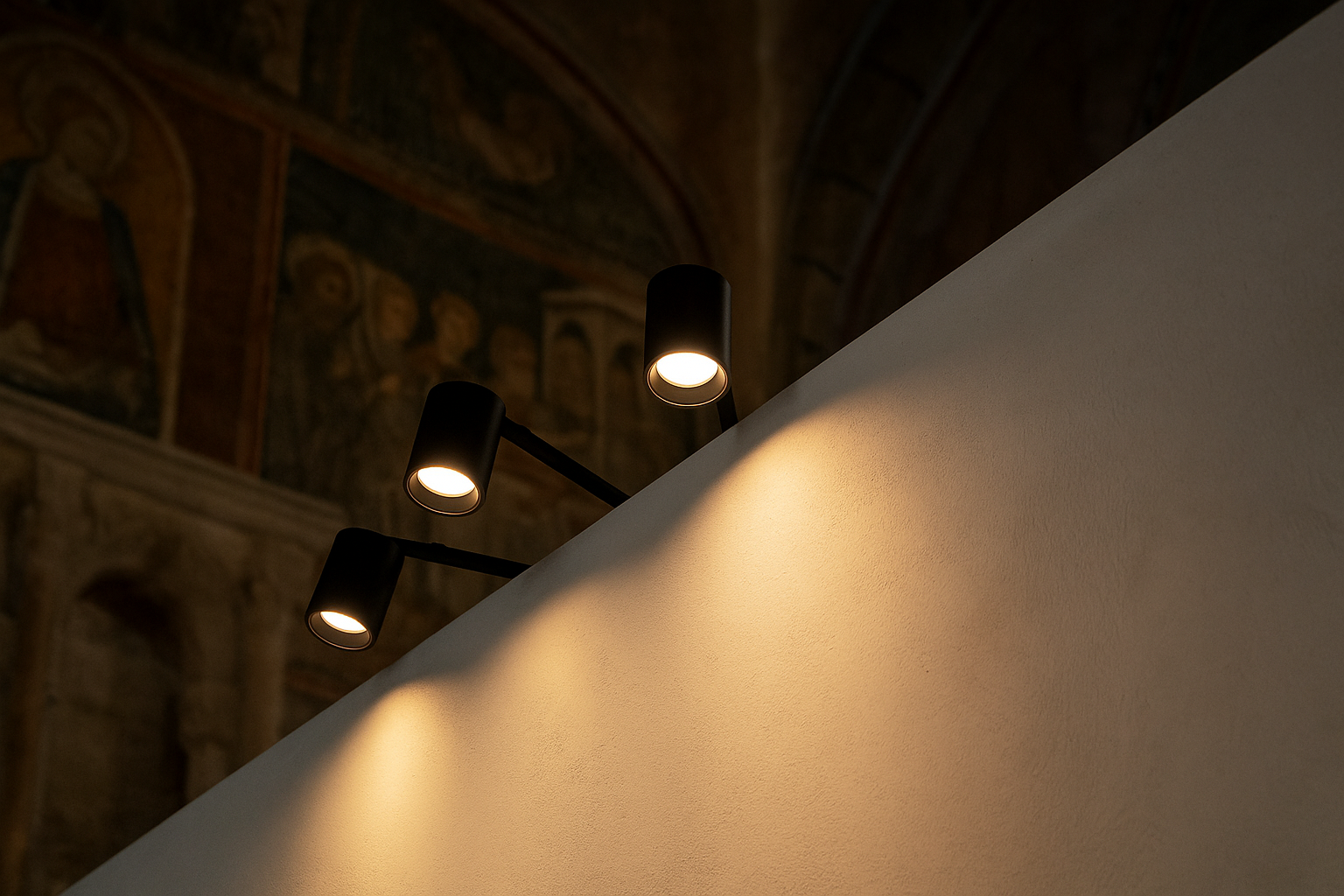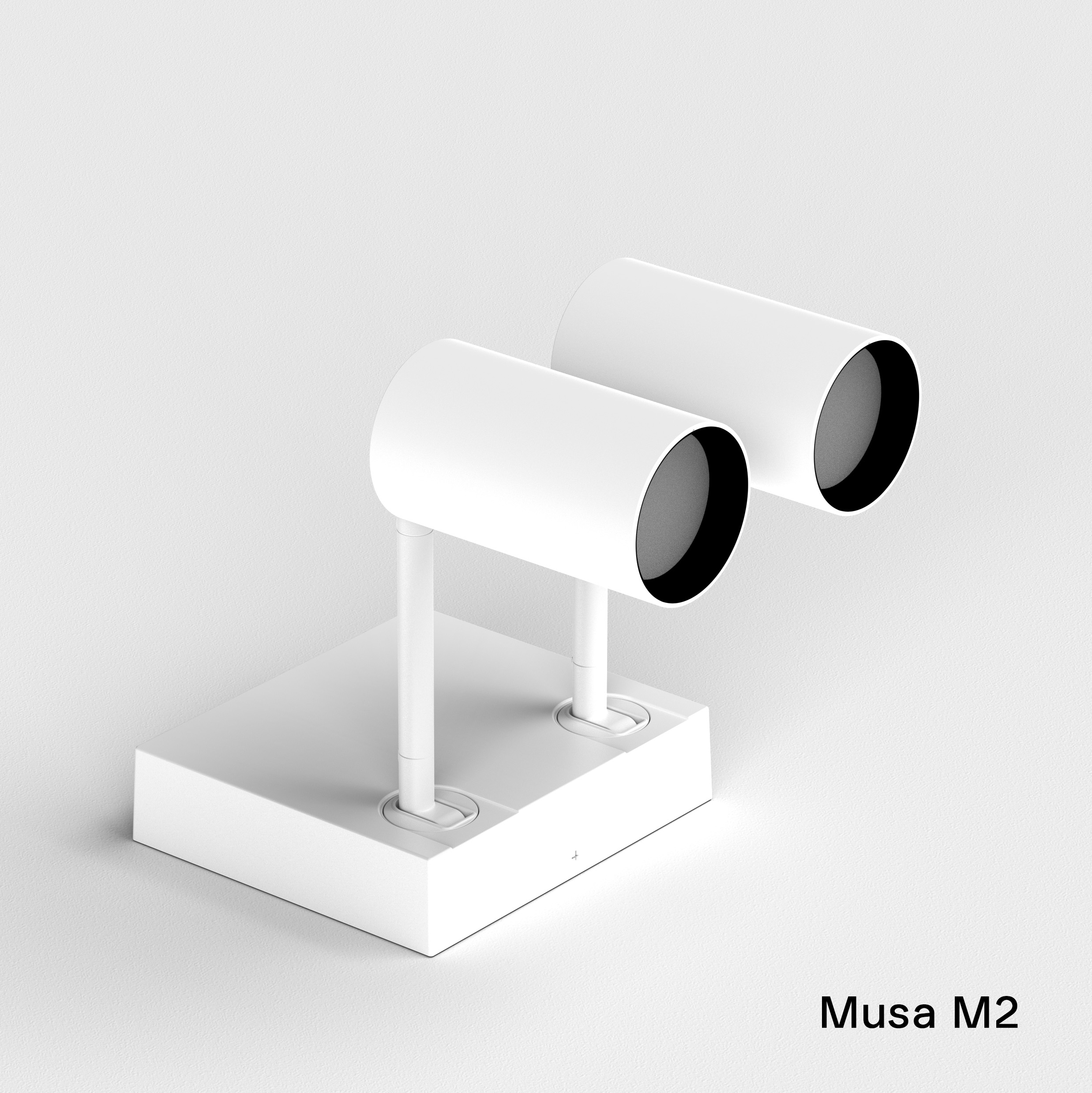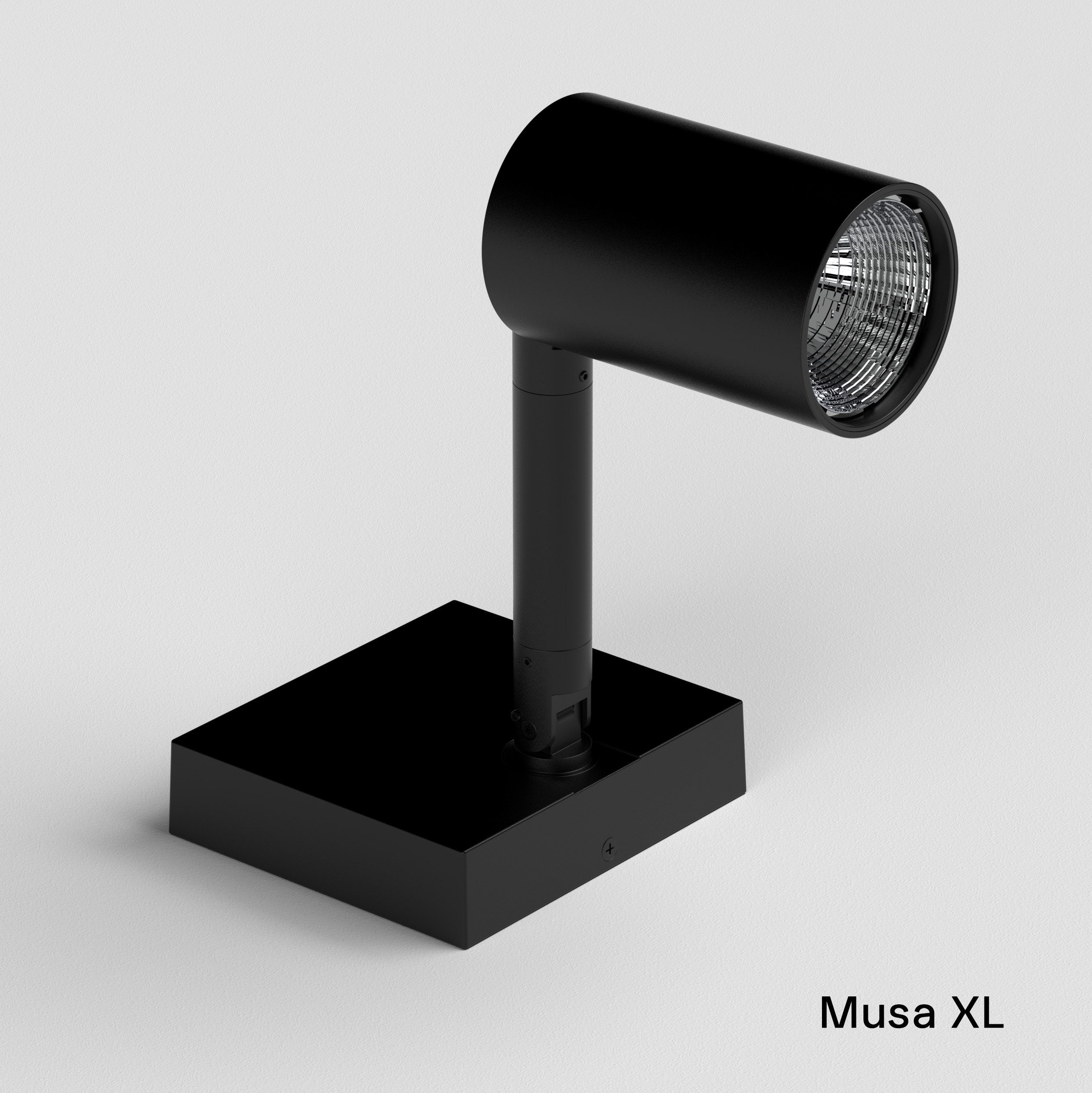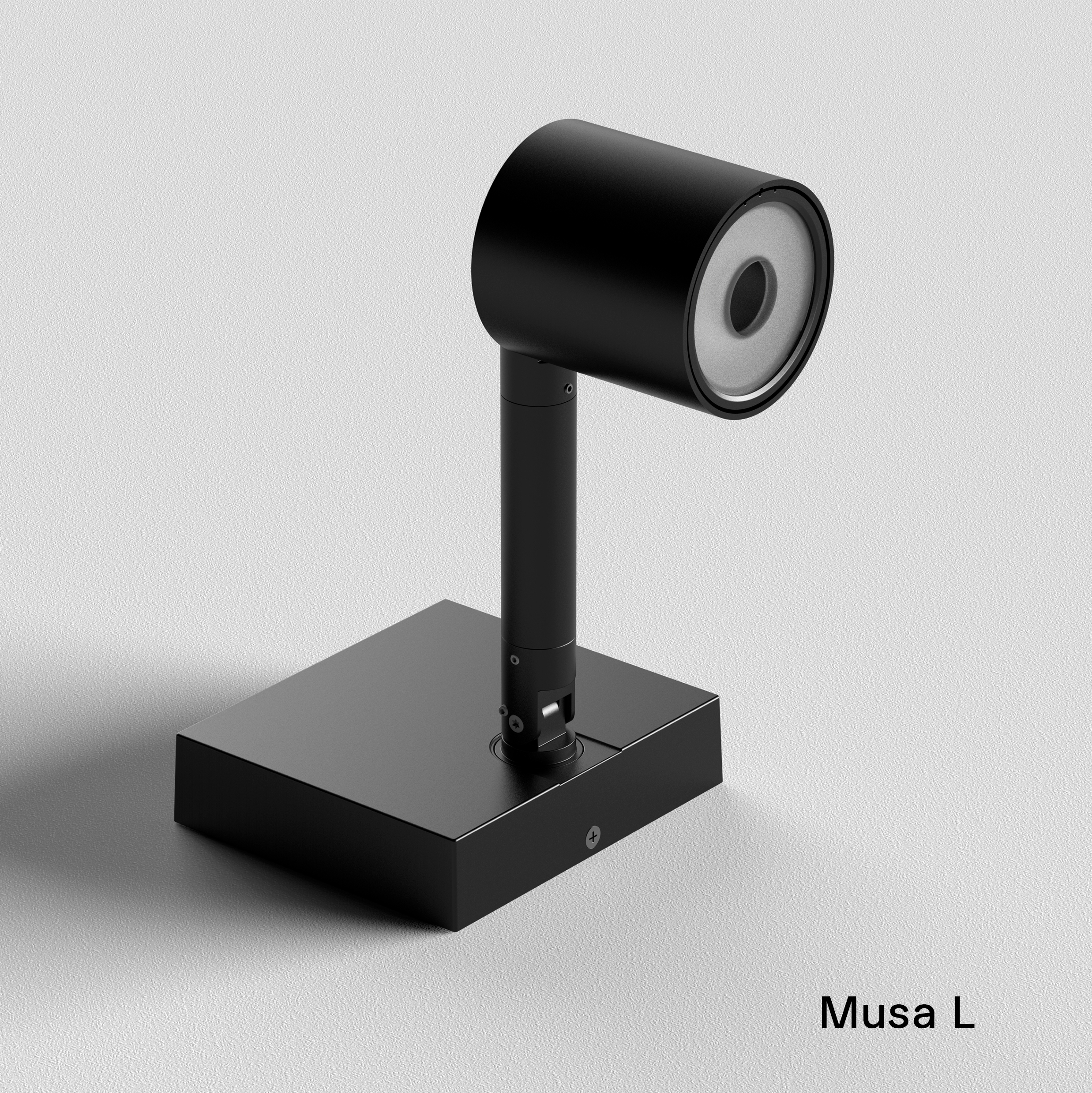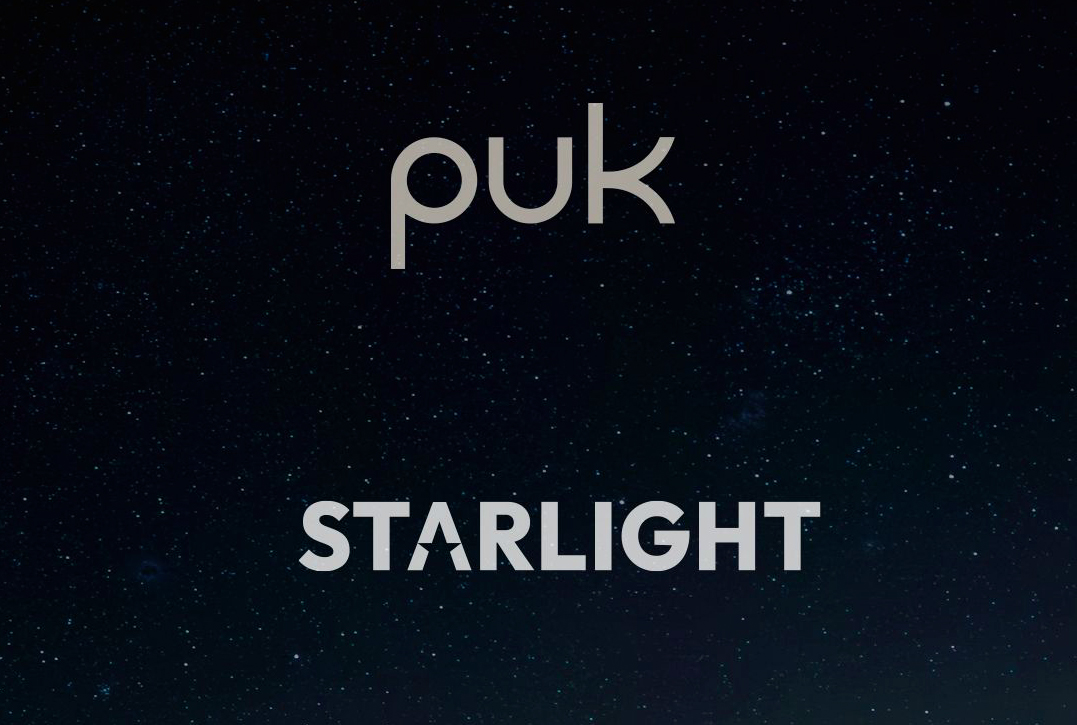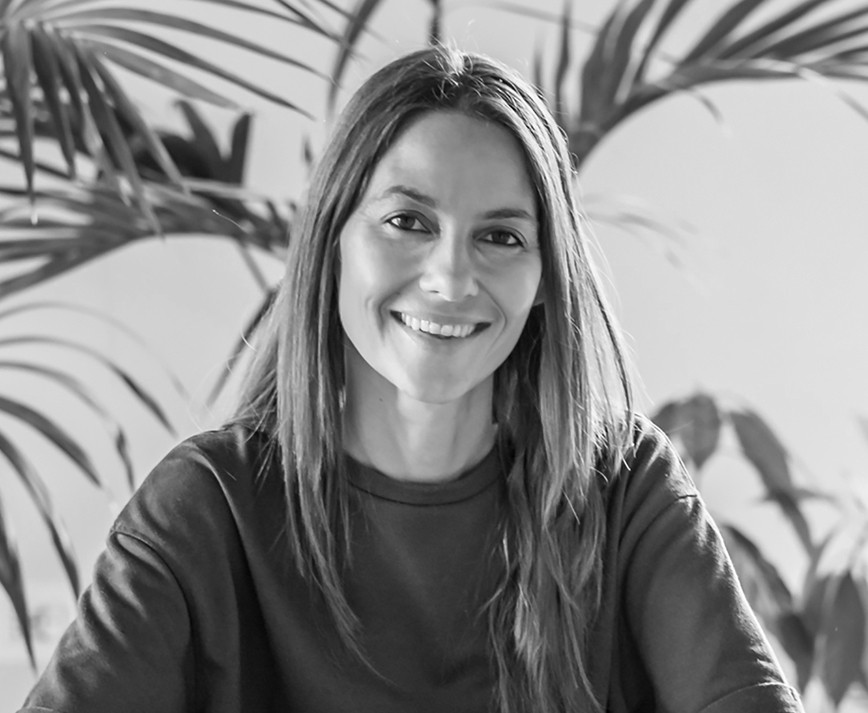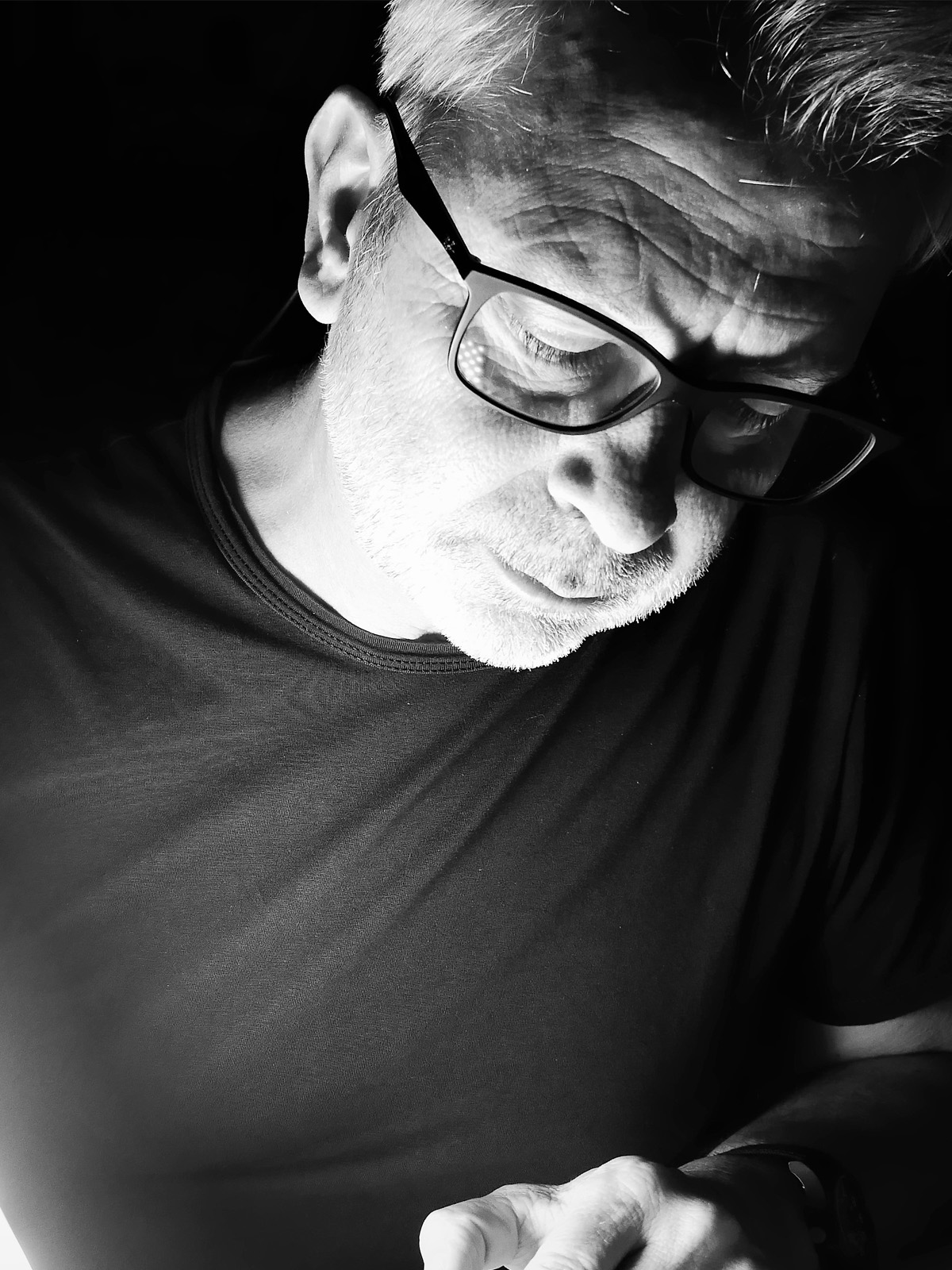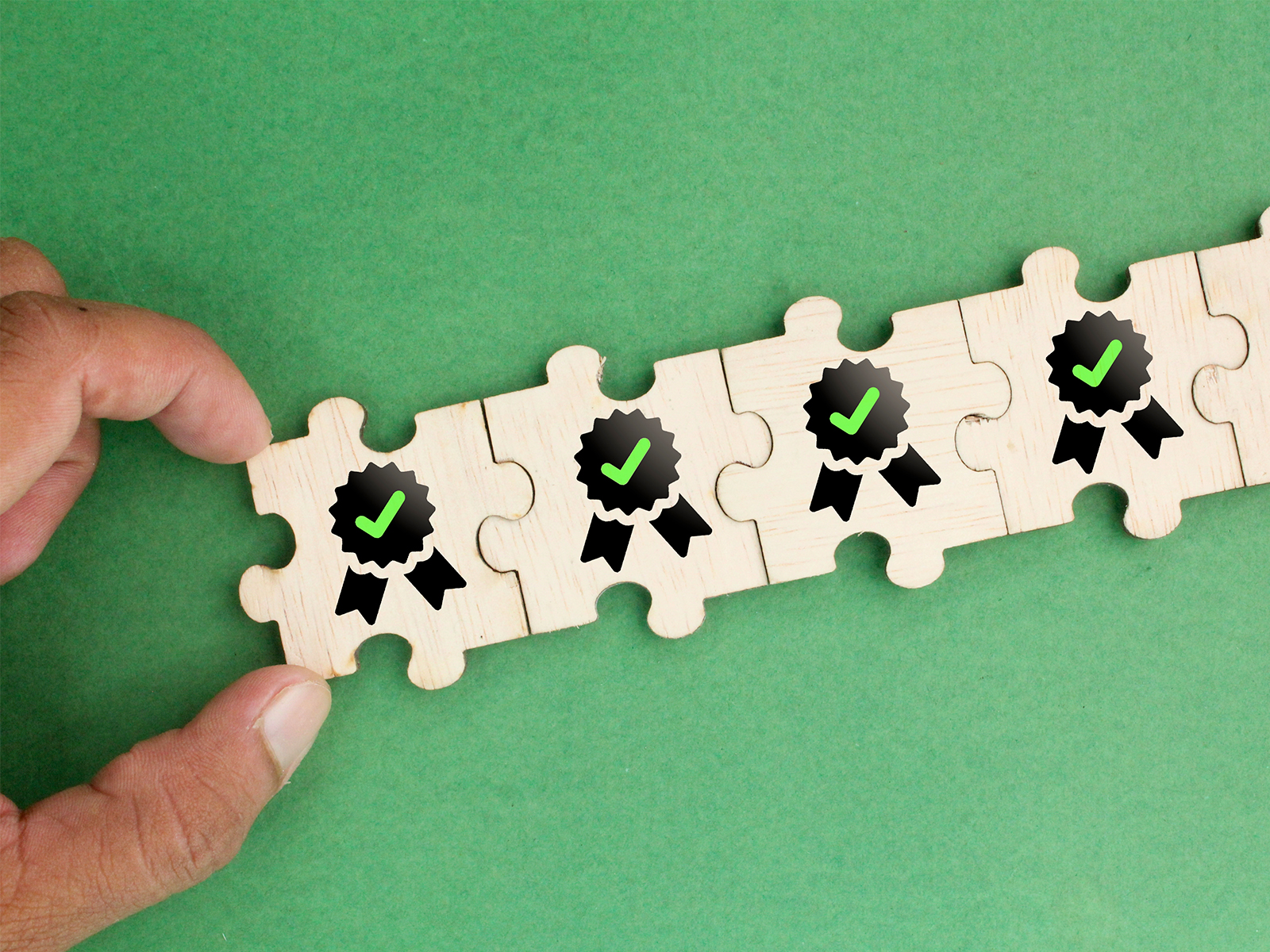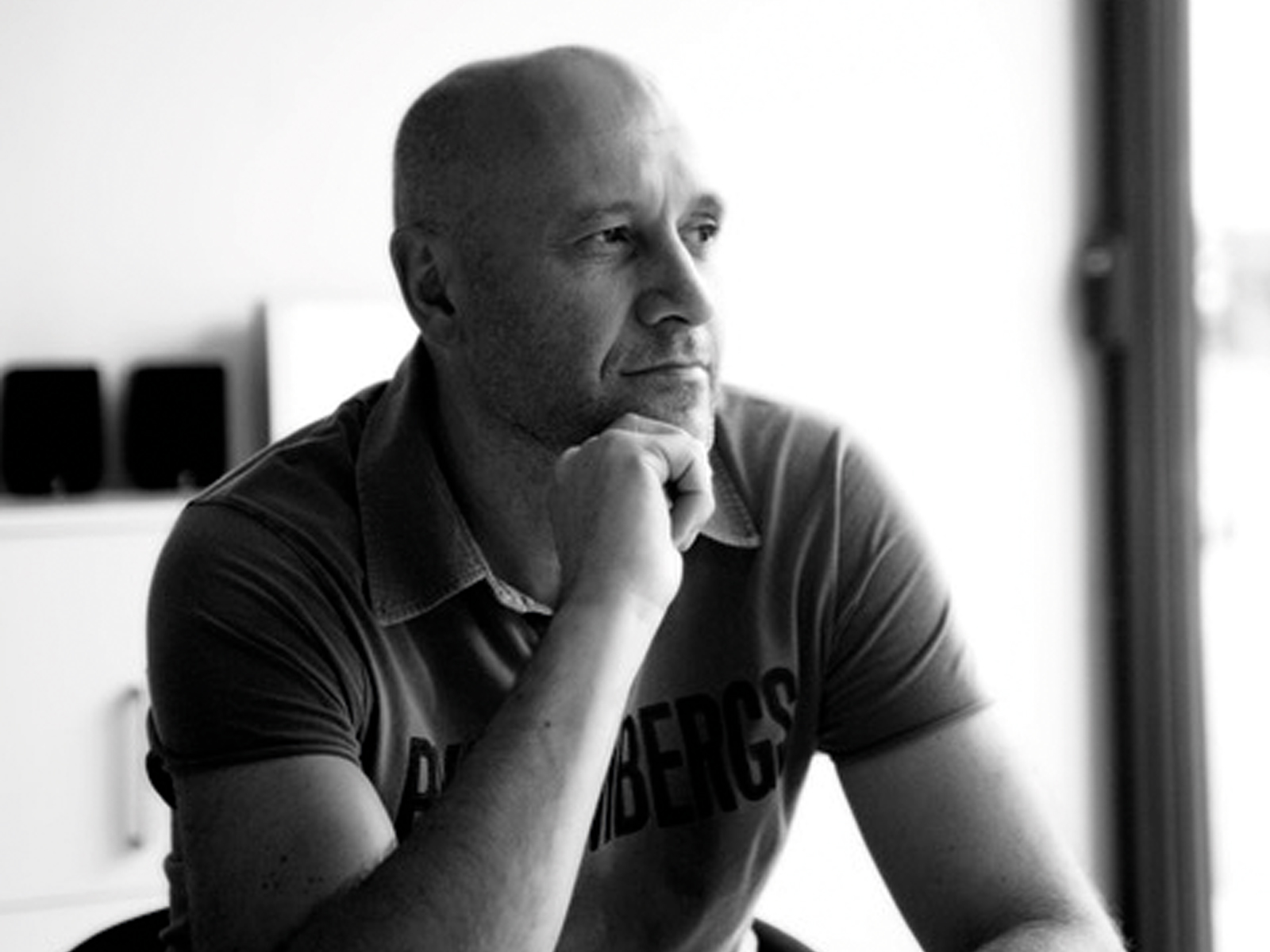
Light as a language of design
How would you describe the Musa family in three words?
Musa is functional: a complete and varied series that meets different power levels, wiring options, orientations and multiple mounting solutions.
Musa is versatile: whatever the context — retail, museum, ecclesiastical or residential — Musa always adapts as a solution.
Musa is minimal: three essential forms — line, cylinder and parallelepiped — combine and interact, maintaining clean lines to create a new object suited to contemporary aesthetics.
What was the main inspiration?
I was mainly inspired by needs: I wanted to address various design requirements with a single product aesthetic, since the market offers few solutions that are so versatile and diverse.
What challenges did you encounter during the design process?
The goal of creating a product with multiple aiming points and wide adjustability was certainly the most challenging: reducing the number of joints without losing functionality required in-depth study. In addition, the desire to create replicable modules led me to specific design choices so that a single power housing could serve the entire product family.
What is your point of view regarding artificial intelligence?
Artificial intelligence can be, and will be, an excellent tool; it can make work smoother and faster if used correctly. However, in my opinion, it must be monitored and controllable, otherwise the value of human work will no longer be recognized.
What do you expect for the future in the lighting field?
Lighting will no longer be just light: I expect an interaction between technologies, so that light will be able to do much more than simply illuminate… and I am already thinking about this future.
Format Design Studio
Designer: Luca Turrini

